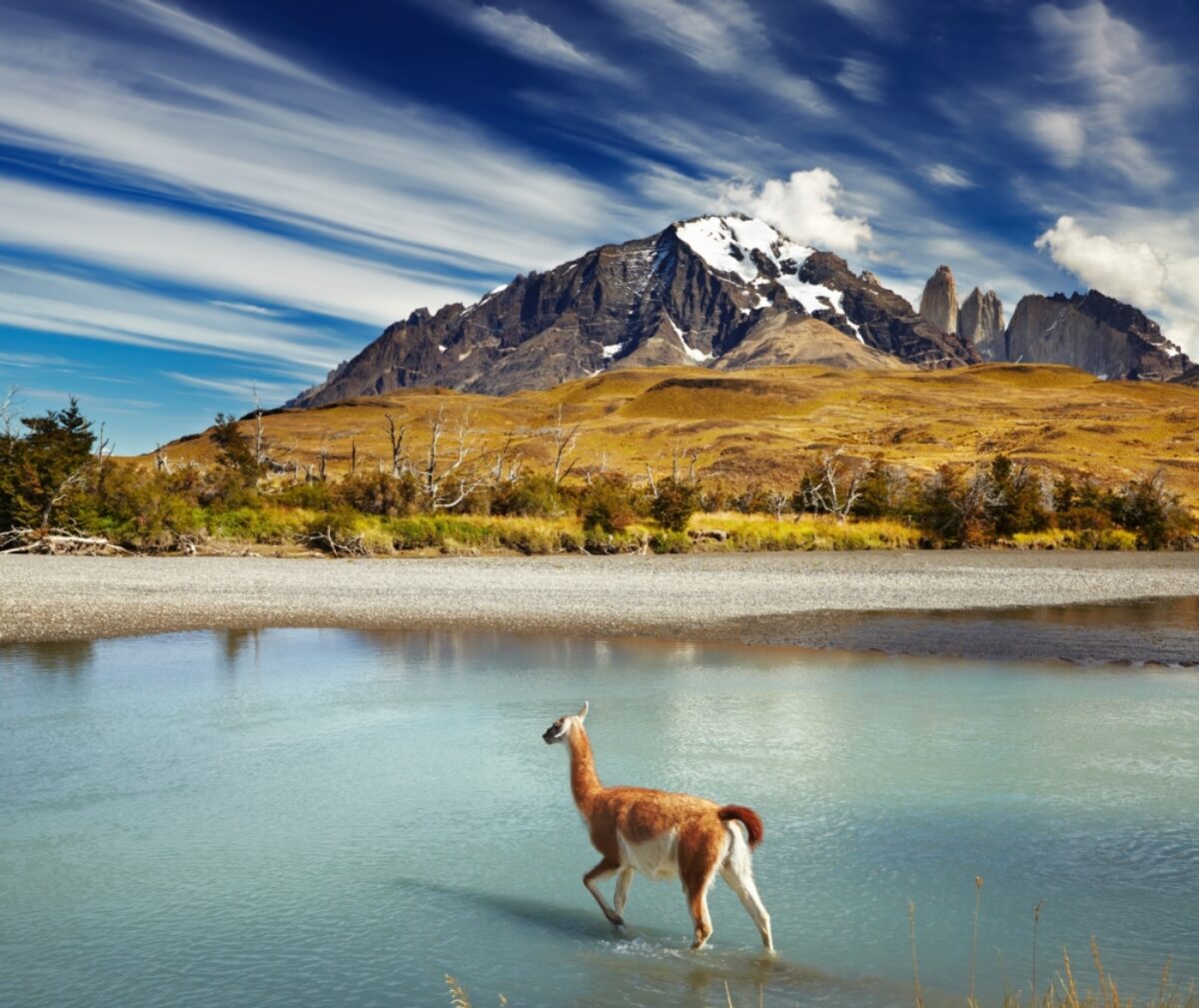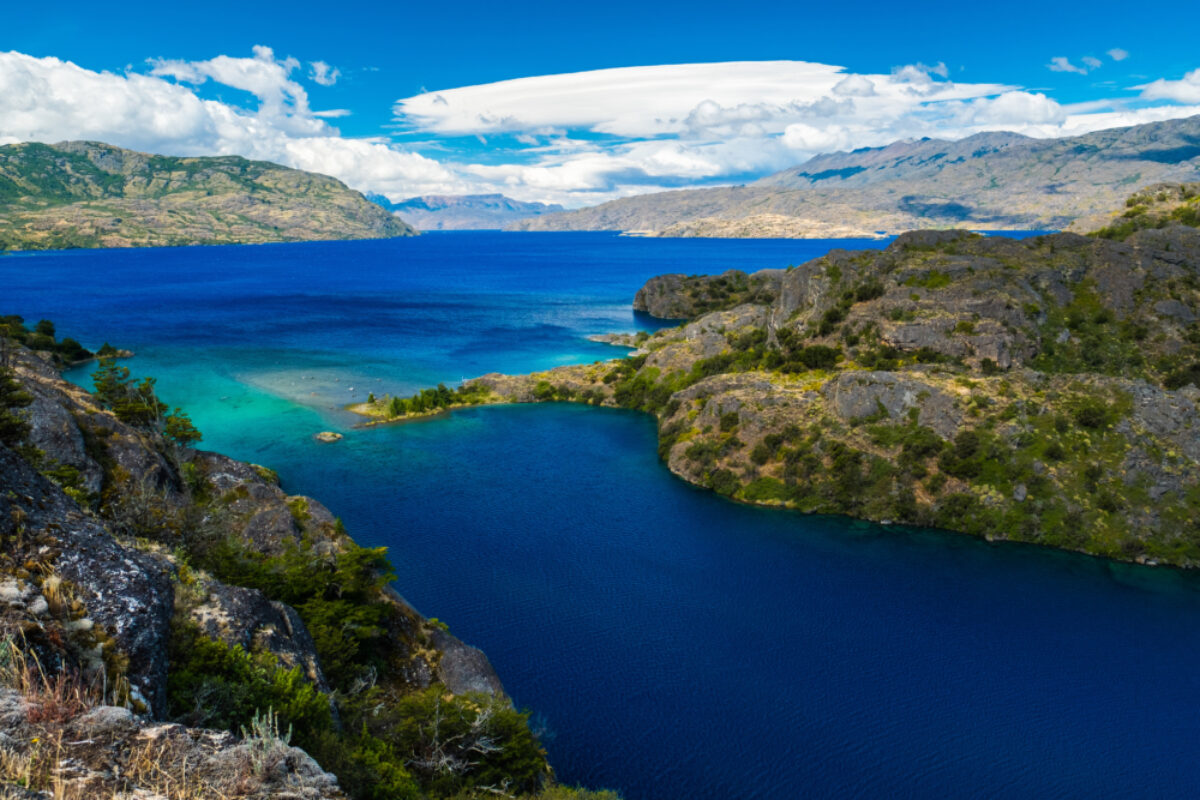Into wonderland: Hiking Patagonia National Park
Adventures in Chile's newest national park
Naked to the waist and barefoot, we wade into the glacial river. The opal water sends an electric chill first through our toes, then gradually up over our shins and knees until we are staggering, rucksacks above our heads. All laser-focus is pinned on reaching the other side.
My Chilean hiking partner Cristian and I have come to the newly inaugurated Patagonia National Park. Our plan: to hike the full 70km link between the river lands of the Jeinimeni Reserve; the guanaco-pocked prairies of the historical Tompkins Conservation property and the wild-native woodland of the Tamango Reserve. Now amalgamated into one giant 722,000-acre national park, we hope to wrestle through this eye-watering wilderness, arriving in five days’ time in the small southerly town of Cochrane. From here, we’ll catch a return bus north to the Aysen Region’s hub Coyhaique. First though, we need to get out of this river.

Guanaco crossing the river in Patagonia, Chile.
The pebbles in the shallows are no trouble for our ice-numb feet as we wade onto the far shore. It’s been a rude awakening to hiking in Patagonia. Forty more get-wet crossings await. But the park warden assured us this first traverse is the worst. The day is warm. A band of shady slender southern beech soon gives way to a broad floodplain. Light reflects from river-rock pools and sun-bleached logs. Our trousers quickly dry as we pick our way up the valley. We no longer remove our shoes, splashing carefreely across instead. Our eyes are free to gaze up at the great green wash of forest, lapping at the sandy flanks of surrounding mountains that scrape beneath a powder-blue Patagonian sky.
It’s two days before my feet stop squelching (best to pack spare shoes) and it’s just in time. Sneaking silently between the golden grasses of the Aviles Valley, I’m on the trail of a guanaco family. Somewhere between a humpless camel and a short-haired llama on steroids, these clack-clacking creatures roam freely across the gently rolling prairie. It’s their ears that give them away. Pert and alert, their pointed fluffy antennae catch the low-evening light, twizzling at the end of white craning necks. This was once sheep grazing ground, but now native guanaco roam right up to the Argentinean border and beyond. Customs officers won’t stop them -- only the patrol of the puma can do that.
Despite these creatures of the night, we wild camp the first two evenings. First in a secluded sheep shearer’s hut (abandoned to the will of the wayfarer) and the second beneath a shimmering canopy of raulí trees, bedding down on the memory foam-like leaf mulch. In this low-lying central belt of Parque Patagonia, park staff have historically outnumbered those in the wilder northern river section 35:1. Infrastructure such as marked trails, serviced campsites and two heart-fluttering suspension bridges mark the difference.
Tip-toeing across the last of these it’s hard to not look down between the slats. The swoosh of water hammers below through a steep gorge. Wisps of spray and cold air cooled by the glacial-flow below make us grip the support cables tighter during this knee-knocking crossing. Half-way over, I catch sight of a swaying shape in the corner of my eye. The suspension bridge’s shadow is cast by the sun over the rocks far below. My outline also dangles above the current. I blink, then scramble over to the other side.
There’s a hint of civilisation in the central Chacabuco Valley. Campsites boast running water and neat guanaco-trimmed tent pitches. We spend a night at the remote Stone House Campground, watching wrinkled peaks turn rosy by nightfall in the shelter of gently swaying poplars.
From here, an east-to-west 4x4 road links the Aviles Valley we’ve just descended with the central park infrastructure. You could walk its dusty 25km length. But we stick our thumbs out, soon catching a lift past flamingo specked lakes. The park’s smart lodge offers fancy dining and accommodation options. Mountain biking and shorter single-day trails begin from here. Tompkins’ two-seater Christen Husky aircraft is parked casually outside. After passing by the visitor’s centre, we press back into the mountains.

Lake Cochrane, Chile
The Tamango section of the park has us pumping our hands on knees before you can say “hairy armadillo” (we never do spy this wonderful Patagonian beast). The trail is a rocky, tree-ducking, route-finding, lung-popping ascent. Soon the yellow steppe is far beneath us. Mountains roll beyond, their snowy peaks like white-capped frozen waves; the tiny buildings we’ve left behind like momentary flotsam tossed in the surf below.
Now we are clambering over gnarled trunks of Antarctic beech. At times they are stacked so high, we climb through them instead of over, supporting our weight as if on monkey bars. These hardy beeches grow where no others can, stretching south from here until they become the last trees left on Earth. Even they are no match for the altitude, wind and rock we steel ourselves against on the summit plateau. We gather our bearings, then dive towards Cochrane, into the enchanted forest.
The last blast of Patagonia National Park is a journey through a land that time forgot. This is the Route of the Huemul, named after Chile’s diminutive and endangered deer, found only in the remotest tracts of native forest. Our single-track trail scurries down through tightly-packed southern beech trees. Occasionally we break out into a silent clearing or a still mountain lake. Gradually, Cristian seems to disappear into the forest as swathes of old man’s beard lichen envelop his clothes, hair and rucksack.
It’s many hours later before we emerge onto the track that leads down into Cochrane. The spell we’ve been under from river crossings, bridges, mountain passes and magical forests over the last five days starts to disintegrate as we approach town. Memories, however, die last. It will be a long time before we forget our personal slice of wonderland.




